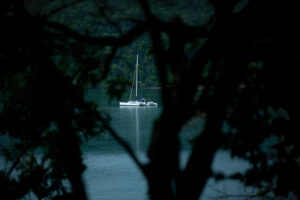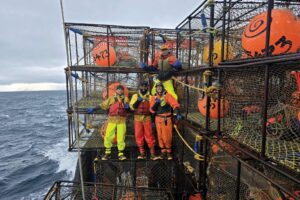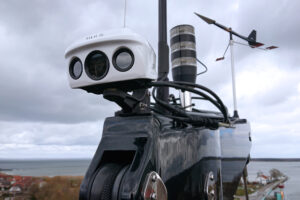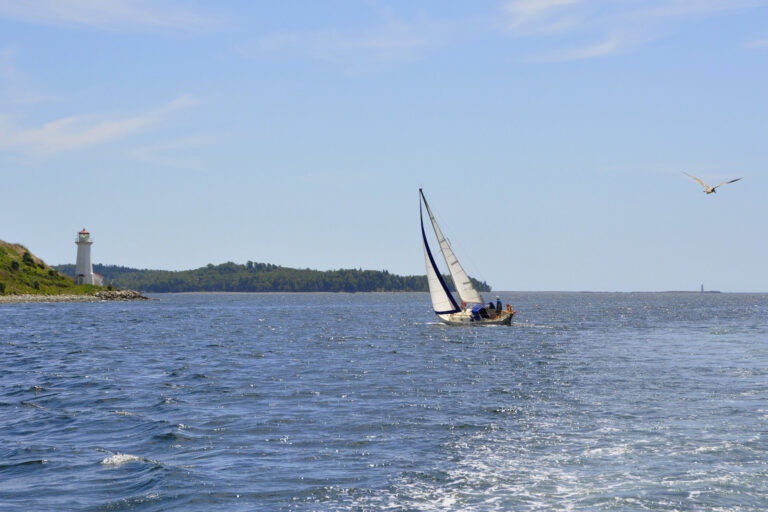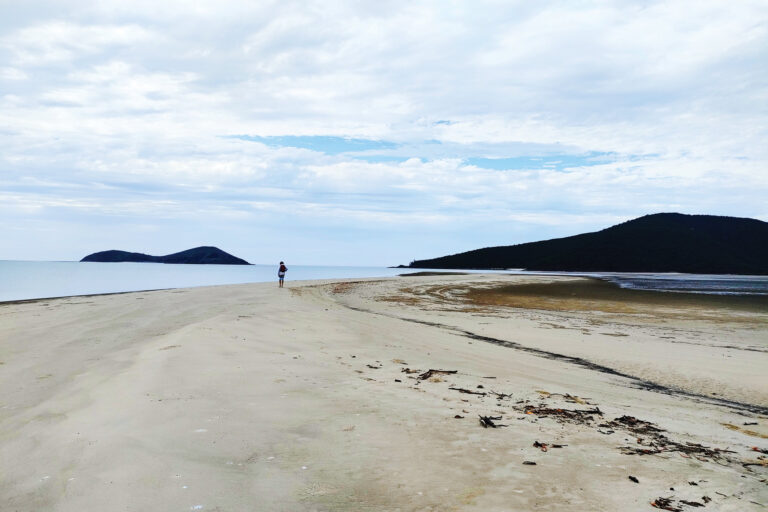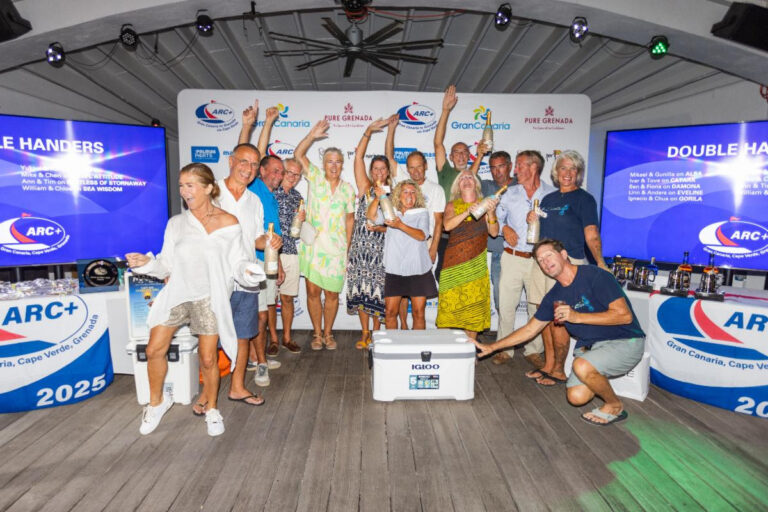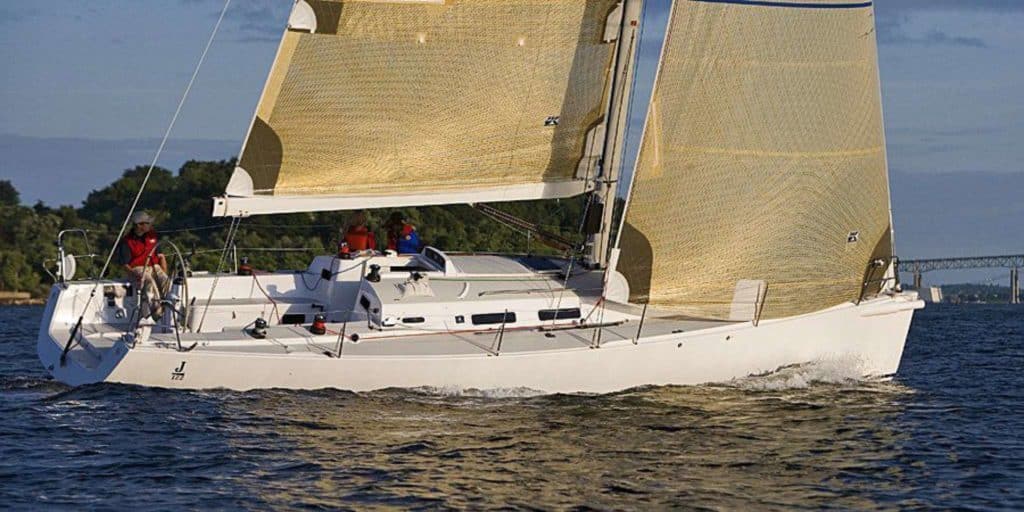
Out on Chesapeake Bay last fall, the new J/122 was perfect for a crew of young bucks who were scurrying round the buoys in a stiff breeze of 18 knots, with frequent gusts into the mid-20s, half of the main going wobbly to keep their boat on its feet as they rocketed upwind and down. Already with a string of significant race firsts, it’s clear that the J/122 is a performance-oriented boat.
And even after we Boat of the Year judges climbed aboard and took over the helm and sheets, “Fast” was the first observation that judge and former racer Tom Linskey recorded in his sailing notes. But his observations and reflections soon arrived at this question: Given that the design being tested was “80 percent racer, compared with this J’s cruisier sisters, the J/42 and the J/46, is the J/122 a cruising boat?”
Unlike a true racing sled, this boat has creature comforts below that could turn the trip to and from a regatta into a pleasant voyage indeed. BOTY judge Stacey Collins, however, would’ve preferred to see more handholds on deck and steps on the mast to help her reach the halyard at the mainsail’s headboard.
As for me, I figure people have found adventure upon the deep aboard everything from ocean liners to a beach cat to a barrel. The better question, I think, is this: Whose cruising boat could this be?
I admit to admiring J boats. Generally, the heritage has provided us with a string of moderately proportioned, seakindly hulls built with high-quality modern materials and techniques. They’re nice boats to steer; good in a seaway, if a bit wet in heavy conditions; and fast on all points. J boats, after proper fitting out, have been chosen by many singlehanded sailors to cross oceans. The J/122 fits its pedigree, though its standard package is clearly oriented toward hauling the mail in light airs, racing with either a keen family or bevy of pals, and some real sport cruising. The liveaboard capability described in the brochure would more than suit me-I’ve been happy on a 21-footer for a year with no more plumbing than a bucket. Which is not to say the 122 is a stripped-down racer; in fact, the furniture and finish are on par with the other cruising boats that were sailed for Boat of the Year. But I’d keep to a minimum the gear and complicated systems that are now de rigueur aboard cruisers so the boat remains light and sails fast. To me, this is a boat for those who like long sleigh rides and a bit of adrenalin now and then.
But for those who just can’t leave the toys at home, J/Boats’ Jeff Johnstone notes that the J/122 was designed with both cruising and racing in mind, so it’s intended to carry some weight. Load it up with 10 crew when hunting for trophies, or send the rail meat packing to bring aboard a comparable amount of cruising stores.
It’s no small feat to design something as complex as a sailboat so that it appears simple, straightforward, and clean. Deceptive simplicity is a mark of J boats in general and of the J/122 in particular. Built by J/Europe in Les Sables d’Olonne, France, the J/122’s elegantly unfettered interior will work while making passages as well as living in port. Twin settees in the saloon can be augmented by swing-up pilot berths to keep resting crew amidships, the best position for minimizing motion and isolating sailors from noise from the cockpit. Twin aft double cabins also boast adequate sea berths offshore while offering privacy in port. Choose the interior on the J/122 featuring one aft cabin and you gain a head convenient to the watch and a generous garage aft, but owners with more numerous guests may prefer the additional sleeping space.
The galley features deep, near-centerline sinks, a three-burner stove and oven, decent bracing for the cook, and some of the most serious and practical fiddles on any of the boats we sailed last fall. The nav table is big enough for some actual chart work, though also ready for all the modern gizmos. Handrails, grabs, and access to seacocks and systems are logical and efficiently placed.
The construction is clean, too. The J/122 features a hull of balsa core and E-glass, resin-infused using the well-honed SCRIMP system to optimize strength, and very neat layup right down to details in places people don’t ordinarily look. I still most trust bonding deck and hull with laminate and mechanical fasteners, so I reserve judgment on a primary hull/deck joint relying almost exclusively on Plexus, although all the theory says it’s fine, and J/Boats believes: It provides both a five-year structural warranty to ride the 122 hard and see how it holds up as well as 10 years against osmotic blistering.
Given the conditions for our test sail, most cruisers would’ve thrown two reefs in the mainsail, but we went with the youth-bashing-about-the-cans full-main approach, flogging our way to weather and reaching off with barreling ease. The steering remained light and responsive. The rig is indicative of the current trend toward small jibs combined with large off-wind sails, this one flown from the J’s retractable sprit. As on Open 60s, the J/122’s shroud chainplates tie to the rail, extending the spreaders and lightening the already light, top-of-the-line, autoclaved Hall Spars carbon mast. With this rig, there’s no need for the complexity of big jibs and running backstays. Control is centered around the helm, where a big wheel hangs on a substantial pedestal that combines footrests, engine and hydraulic controls, and access to steering gear. The double-ended mainsheet exits from under the deck to the aft cockpit winches, handy, as is the manual bilge pump, to the helmsman (although when sailing off the wind, the mainsheet lies over the leeward winch). A high bridgedeck protects the cabin from downflooding. Cruisers will want to close off the back of the cockpit using the optional transom box, which will likely contain the life raft. Even racers might consider adding a lower lifeline across the opening. And cruisers will want to consider installing handrails forward of the mast and, definitely, some optional toerails aft.
J/Boats doesn’t incorporate features just because they’re trendy; instead, it uses what’s practical, whether traditional or new, to create a package that hones the primary function of a sailboat: It sails. Whatever else it will do once fully prepared-club racing with mates, scooting to Bermuda or even Hawai’i, or flash dancing to your favorite cruising nook-is up to you.
Steve Callahan is a frequent CW contributor and was a 2008 Boat of the Year judge.
J/122
LOA 40′ 0″ (12.19 m.)
LWL 34′ 7″ (10.54 m.)
Beam 11′ 11″ (3.63 m.)
Draft 7′ 2″ (2.18 m.)
Sail Area (100%) 865 sq. ft. (80.4 sq. m.)
Ballast 5,600 lb. (2,540 kg.)
Displacement 14,900 lb. (6,759 kg.)
Ballast/D .38
D/L 161
SA/D 22.9
Water 42 gal. (159 l.)
Fuel 35 gal. (132 l.)
Mast Height 62′ 0″ (18.9 m.)
Engine 40-hp. Volvo
Designer Alan Johnstone
Price $450,000
J/Boats Inc.
(401) 846-8410
www.jboats.com
• The J/122 has now been replaced by the J/122E, an updated version of the 2000s model.


